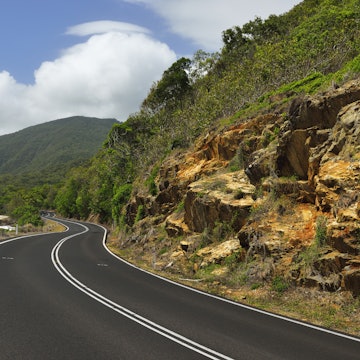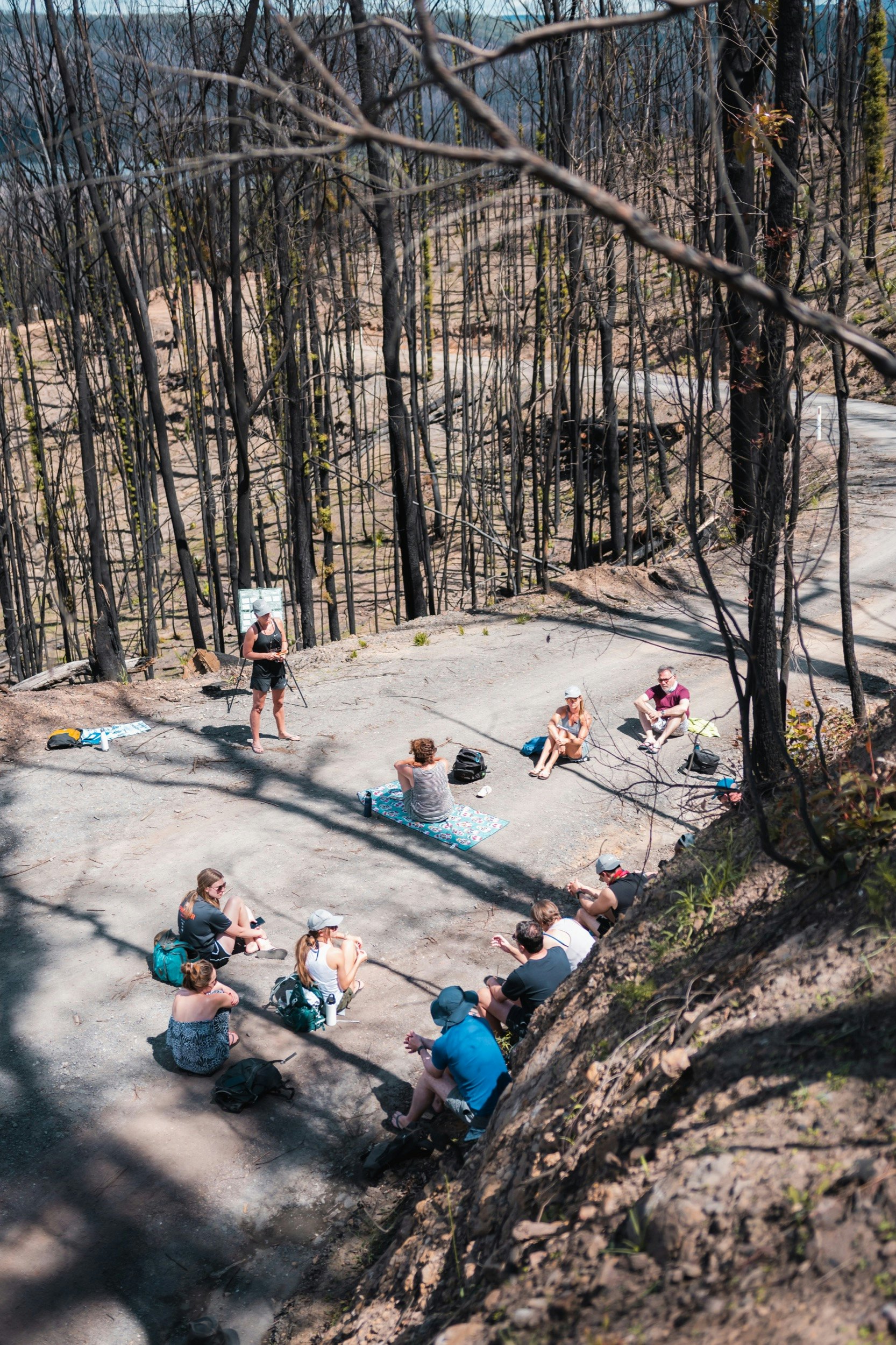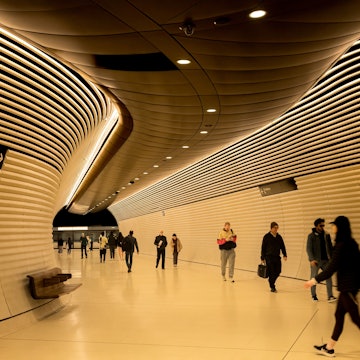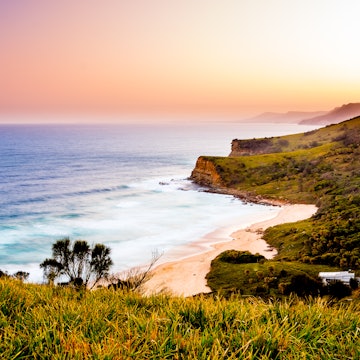
Australian adventures that give back to the land and people
Sponsored by

Mar 31, 2021 • 6 min read

Traditions of custodianship of the land have been passed down among Indigenous communities in Australia for thousands of years © Holger Leue / Lonely Planet Images
If 2020 taught us anything, it’s the value of real human connection. As we tore up our holiday plans, many began wondering if, in the post-COVID world, a different kind of travel might be possible. Travelers began to look for ways to connect with communities, contribute to natural environments and travel with greater purpose.
Those travel connections are easily forged in Australia, where traditions of custodianship of the land have been passed down among Indigenous communities for thousands of years. As the nation continues its recovery from the dual setbacks of the pandemic and devastating bushfires, there are plenty of opportunities for responsible travellers to be a force for good. So, starting in Sydney – Australia’s largest city and a major hub for international travellers arriving in the country – here are some ideas for travellers who want to give back.

Aboriginal welcome to country
In Eora country, also known as central Sydney, Dunghutti-Jerrinjah woman Margret Campbell runs Dreamtime Southern X, exploring layers of Indigenous kinship that connect people, country and climate through 65,000 years of continuous culture. The tour begins with a ritual application of ochre to the hands, a personal acknowledgement of the Earth Mother.
“When we welcome you and invite you to walk country, sleep on it, eat on country, it’s like a protection order,” says Margret. “So long as you remain within the protocols that we’re teaching in that ceremony, we’d expect you to go unhindered, given that we’ve already connected you with ancestral creators.”
In times past, this sort of ceremony would have been the first step in a learning journey into ancestral country. Like those ancient journeys, Margret’s tour changes with the seasons, looking at the meanings and uses of seasonal plants and animals, astronomy and kinship systems. She also covers the impacts of colonization, dispossession and injustice experienced by her community since the first white settlers dropped anchor nearby in 1788.

The bushfires of 2020
COVID-19 turned the world upside down in March 2020, but for many Australian communities, the upheavals of that year arrived several months earlier in the form of a record bushfire season. In January and February 2020, 17 million hectares of Australian bush were lost, an area more than twice the size of Austria.
As communities banded together to recover and rebuild, many worked tirelessly to assist native wildlife that had suffered enormous losses of life and habitat. In beautiful Kangaroo Valley, two and a half hours’ drive south of Sydney, Amanda Fry set up the Helping Hands Facebook group to link volunteers wanting to assist the recovery efforts. She’s been inspired by visitors donating their time, building enclosures and transporting supplies, like baby koala formula, to keep wildlife sanctuaries operational.
“We do have these wonderful things that are coming out of this. Australians are resilient, we’re tough,” she says. “But the fact that we’ve got animals in care that can go out into the release sites and repopulate is thanks to the speed and manoeuvrability of community and volunteers.”
Amanda also runs Experience Nature, offering bespoke ‘Travel with Purpose’ experiences. Alongside activities like seasonal foraging, wilderness glamping and gourmet bush dining, she offers immersive workshops in the fire zone to look at the role of fire in Australian ecology.
“In March we took a group to a property in the middle of the fire zone that was saved,” she said. “They met the guys who fought the fire, they saw a video of the fire coming through the property. They did workshops, and we took them out on the water.”
Amanda tailors experiences to individual interests, which might include meeting locals and hearing first-hand stories of courage, resilience and recovery.

Supporting wildlife & ecosystems
Stories of hope come from people like Kerstin Schweth, who has been running Native Wildlife Rescue, a non-profit sanctuary caring for up to 35 animals at a time, since 2006. Kerstin, and wildlife volunteers like her, are just now beginning to release animals rescued from the fires back into the wild. “We have animals in care for up to two years. And that applies to kangaroos, to koalas, to wombats, until they become the appropriate size where they can survive without our help,” she says.
Amanda Fry also works with Travis Frenay who runs Paddle & Portage canoe tours deep into an area affected by the fires at Tallowa Dam. Travis defended his own home on the terrible day the fire hit. He and his wife escaped direct damage, but the experience was a shock to his community that was soon felt by the whole country. “You just felt like a fan-forced oven was coming your way. And you couldn’t see anything, the smoke was just incredibly thick and putrid in the air,” he said.
Now, drawing on his intimate knowledge of the bush and its precious ecosystem, he points out the signs of the fires’ impact but also recovery, including the fast-growing kangaroo apple (Solanum aviculare). This native shrub with purple flowers and small orange fruit moves in quickly in the aftermath of the fires to provide food for native animals as they re-establish themselves in the charred environment.

Extend your trip
Uncovering opportunities to spend time with local communities can have a real and lasting impact on their recovery, resilience and community economies. It also can lead to eye-opening and educational encounters.
If you’re ready to branch out of the heart of Sydney but want to stay in New South Wales, Emirates One & Only Wolgan Valley is a luxury conservation-based resort in the Blue Mountains World Heritage Area on a 2800-hectare conservancy. Its main homestead was spared from the fires, but the reserve was greatly impacted. Guests can choose to get involved in conservation efforts such as habitat reconstruction and bush regeneration.
At Port Stephens, in the northern part of the state, Sand Dune Adventures, owned by Worimi Aboriginal Land Council, offers a high-adrenaline quad bike experience on the largest coastal sand dunes in the Southern Hemisphere, while weaving in cultural knowledge and history.
Push into Victoria, New South Wales’ neighbouring state to the south, and connect with Indigenous culture at Aboriginal-owned Brambuk Cultural Centre in Geriwerd, aka Grampians National Park. The Grampians are one of the state’s most significant natural and cultural features and act as a haven for bushwalkers, rock climbers and nature lovers.
If you’re looking to go even further afield, in South Australia, Aboriginal-owned Wilpena Pound Resort connects travellers with ancient Adnyamathanha heritage in the stunning Flinders Ranges. You can arrange Adnyamathanha guided experiences to rock art sites or share a campfire evening with traditional storytellers.
Off the coast of South Australia, on bushfire-ravaged Kangaroo Island, the eco-certified Exceptional Kangaroo Island has incorporated an exploration of fire ecology and the resilience of the Australian bush into its tours.
There are many more experiences like this to be found in Australia, where every corner of the country features another chance to connect on a personal level with communities and natural environments. When it’s time to travel to Australia again, find out for yourself what an itinerary based on giving back to the land and its people can add to your journey.
You might also like
Australia is on the road to recovery
Learning from Australia’s Indigenous storytellers
Sponsored by Tourism Australia
As a travel entertainment and inspirational media outlet, we sometimes incorporate brand sponsors into our efforts. This activity is clearly labeled across our platforms.
This story was crafted collaboratively between Tourism Australia and Lonely Planet. Both parties provided research and curated content to produce this story. We disclose when information isn’t ours.
With sponsored content, both Lonely Planet and our brand partners have specific responsibilities:
-
Brand partner
Determines the concept, provides briefing, research material, and may provide feedback.
-
Lonely Planet
We provide expertise, firsthand insights, and verify with third-party sources when needed.













